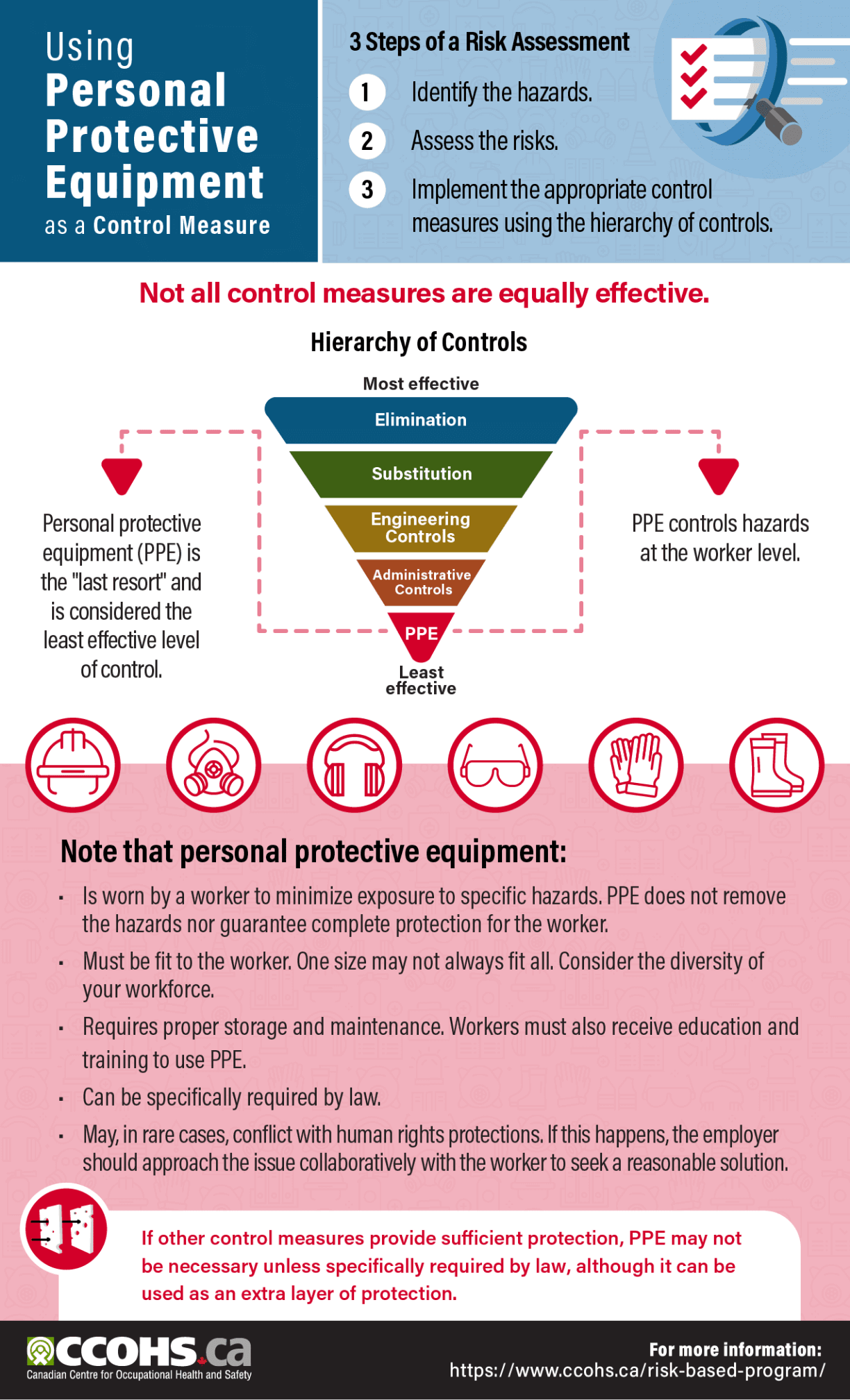Using Personal Protective Equipment as a Control Measure and its text description

Description: Using Personal
Protective Equipment as a Control Measure
3 Steps of a Risk Assessment
- Identify the hazards.
- Assess the risks.
- Implement the appropriate control measures using the hierarchy of controls.
Image description: Hierarchy of controls diagram indicating the most effective to the least effective control measure: elimination, substitution, engineering controls, administrative controls, PPE
Not all control measures are equally effective.
Personal protective equipment (PPE) is the "last resort" and is considered the least effective level of control.
PPE controls hazards at the worker level.
Image description: Icons of a hardhat, N95 respirator, earmuffs and earplugs, safety glasses and over-the-glasses safety glasses, gloves, and boots
Note that personal protective equipment:
- Is worn by a worker to minimize exposure to specific hazards. PPE does not remove the hazards nor guarantee complete protection for the worker.
- Must be fit to the worker. One size may not always fit all. Consider the diversity of your workforce.
- Requires proper storage and maintenance. Workers must also receive education and training to use PPE.
- Can be specifically required by law.
- May, in rare cases, conflict with human rights protections. If this happens, the employer should approach the issue collaboratively with the worker to seek a reasonable solution.
If other control measures provide sufficient protection, PPE may not be necessary unless specifically required by law, although it can be used as an extra layer of protection.

